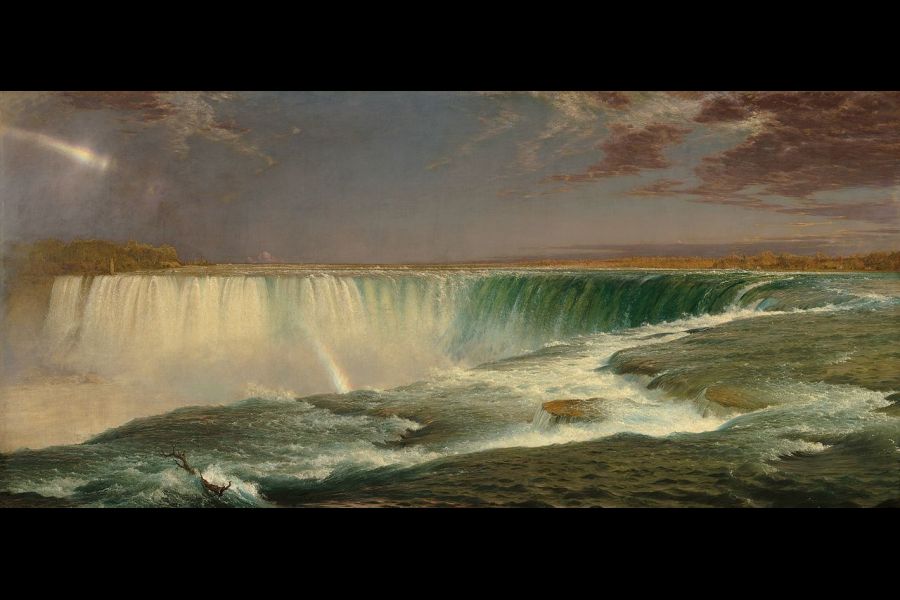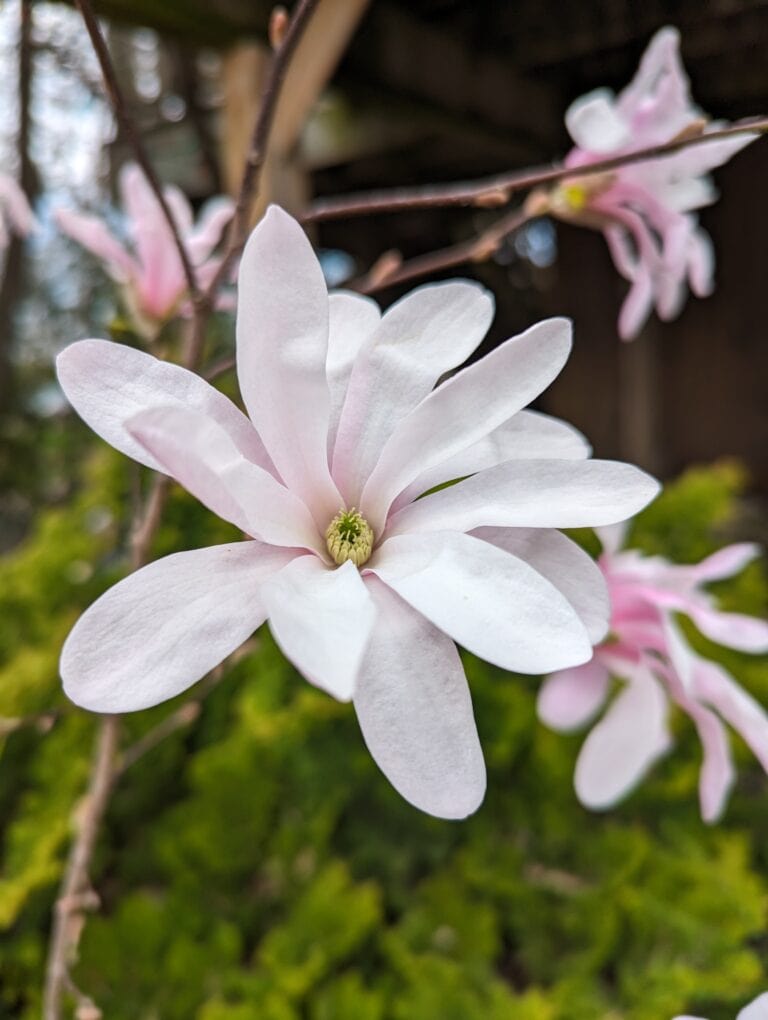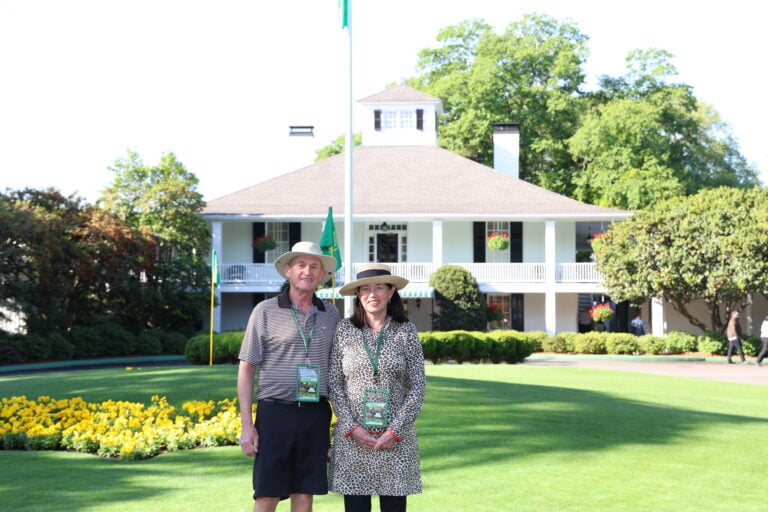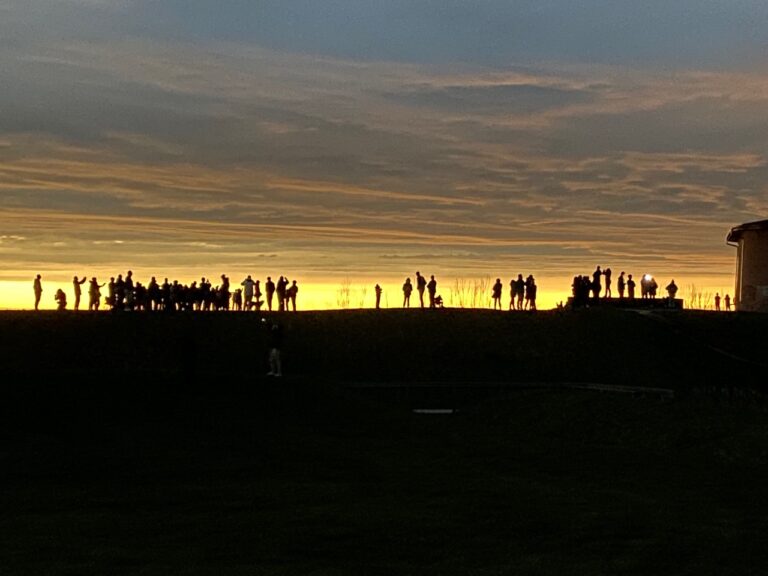Penny-Lynn Cookson
Special to The Lake Report/Niagara Now
Now, before you sigh “Not another image of Niagara Falls,” wait – because the back story is fascinating.
There may be other falls: Angel is the highest, Iguazu the largest, Victoria exotic, Havasu colourful, but Niagara is the most powerful, exhilarating and famous.
Being the most commonly painted subject in 18th- and 19th-century European and American landscape painting, it was known as the Eighth Wonder of the World and later as the Honeymoon Capital of the World.
Prints were given as wedding gifts. Its image appeared on stereographs, china, wallpaper and lampshades. But beyond the tourist appeal and the beauty lay deeper currents of nationalism, nature, the land and God.
The artist who best conveyed those themes was Frederic Edwin Church who in 1857, at age 31, created “Niagara” as a panoramic and dramatic natural wonder to outshine any place in Europe and as a symbol of America’s promise. This was Niagara as manifest destiny, as soul, spirit and prophecy, a mythical deluge that would wash away the memory of the Old World and bring forth the New World.
Church was born in Hartford, Conn., in 1826 to affluent parents who encouraged his early talent. He was the only pupil to Thomas Cole, America’s leading landscape painter and founder of the Hudson River School, which reflected 19th-century American themes of discovery, exploration, settlement and nature as a reflection of God.
At 19, Church exhibited at the National Academy in New York and at 23 was the youngest person elected to full membership. He travelled extensively throughout the northeastern U.S. and, inspired by the explorations and writing of the great German geographer and naturalist Alexander von Humboldt, he spent five months in Colombia and Ecuador.
His paintings of the Andes were a great success but it was “Niagara” that made his reputation as the most important landscape painter in America. No artist prior to Church had captured the magnificent sweep, drama and detail of the Horseshoe Falls seen from the Canadian side on such a grand scale.
His canvas is nearly three times wider than the height. The eye is led sideways, suggesting the vast western wilderness still to be explored. By eliminating foreground and framing that direct the eye deep into the composition, the viewer is thrust forward and down to experience the scene from the very edge of the drop off.
A large tree trunk is swept by the force of the currents. Water swiftly slides over rock ledges to form a foaming white pool before tumbling over the precipice into the mist and river below. A rainbow is seen in the upper left and its other half in the thick mist inspire transcendence.
The painting was exhibited alone, illuminated in a darkened Manhattan gallery. Admission was 25 cents, which included the use of binoculars to increase the thrill of the experience. In two weeks, over 100,000 people had seen “the finest oil picture ever painted this side of the Atlantic.” It toured to major U.S. cities, Britain and Paris, where it won the silver medal in the 1867 Exposition Universelle.
Niagara’s fame continued to inspire. Daredevils such as The Great Blondin and Nik Wallenda walked tightropes over the falls. Annie Edson Taylor at 63 was the first person to survive going over the falls in a barrel in 1901. “Niagara,” a 1953 film noir thriller, starred Marilyn Monroe, who appeared in the release poster lying horizontally across the top of the falls.
The type reads, “Marilyn Monroe and 'Niagara,' a raging torrent of emotion that even nature can’t control!” Hollywood aside, let’s concur with Pierre Berton, author of “Niagara,” who wrote: “Of the hundreds of paintings made of Niagara before Church and after him, this is by common consent the greatest.”
Penny-Lynn Cookson
Special to Niagara Now/The Lake Report
Sunday, July 11, 2021, will remain a day not easily forgotten. The Euro Cup 2020 was won by Italy over England on penalties.
Euphoria for Italy and, for England, crushing disappointment. Earlier, a pregame ticketless crowd breached security and poured into Wembley Stadium as a calamitous mass of yelling bodies, pushing forward between hanging banners to reach seats.
There were no COVID masks but plenty of decorative paint streaks masking faces: red and white for England; green, white and red for Italy. The colourful costumes, the waving flags, the joyous and anguished faces and the turbulence in the stands kept reminding me of the paintings of the Belgian artist James Ensor, the “master of the macabre.”
In Ensor’s huge 8-foot high by 14-foot wide painting of “Christ’s Entry into Brussels in 1889,” we see a conflict between reason and madness, order and revolt.
Ensor imagines Christ as a revolutionary figure, the liberating king, who traditionally entered Jerusalem on Palm Sunday, nearly lost to view in the maelstrom of a carnival crowd surging toward the viewer, banners flying, a uniformed band marching and the dignitaries observing from the side.
A few days later, the same masked and grimacing fickle crowd will shout to the Romans for his execution, the implication being if Christ showed up in Brussels in 1889 he’d be crucified again.
As Ensor regularly attended carnivals, he was an acute observer of crowds, their theatrical vibrancy and noise, and saw that beneath the raucous energy and fantasy lay undercurrents of menace and violence. He was a visionary in the pure fantastical tradition of his fellow Flemish artists Hieronymous Bosch and Bruegel the Younger.
Ensor was born in the seaside resort town of Ostend, Belgium, in 1860. His father was English, his mother Belgian and her family’s business was a curio shop catering to tourists and those attending the annual Ostend Carnival. Masks, therefore, were a big part of their trade, along with seashells, knick-knacks, chinoiserie and Japanese fans.
The family lived above the shop and Ensor had his studio in the attic. The assorted objects in the shop were frequently incorporated into his work as he was stimulated by “their opulent colour, reflections and sparkling rays of light.” He studied in Brussels at the academy but chafed at the traditional academic approach and the rejection of his work by the Salon and critics.
Initially, he was a stylistic nomad, passing through Post-Impressionism, Fauvism and Symbolism and the progressive Les Vingt group but parted ways as he was a singular, opinionated artist confident in his own unique vision, solitary but socially engaged in the issues of his time and the debates on the nature of modernism.
His early subjects and themes had been interiors, still life, landscapes, religious topics and portraiture. In the 1880s his subject matter changed to fantasy, caricature and satire, the carnival crowds and the grotesque. Individuals appeared as clowns or skeletons, their faces covered with masks representing the true faces of humanity, more often suggesting nightmares than carefree joy.
On his mysterious use of masks, Ensor was candid that they were an opportunity for extravagant gesture, expression and decoration, for “exquisite turbulence.” On his frequent use of skulls? Commonplace, regularly turning up on the beach where 130,000 Flemish were massacred in the 17th-century war against Spain.
By 1929, his brilliance acknowledged at last, he was made a baron by King Leopold. His precise technique, use of vibrant colour, violence and fantasy presaged German Expressionism and Belgian Surrealism. His statement that he had “anticipated all modern tendencies in every direction” has proved true.
Penny-Lynn Cookson is an art historian who taught at the University of Toronto for 10 years. She was also head of extension services at the Art Gallery of Ontario. She will be giving four lectures on “Landscape and Memory” at the Pumphouse Arts Centre, Wednesdays, Aug. 4 to 25, and lectures at RiverBrink Art Museum in September and October.










